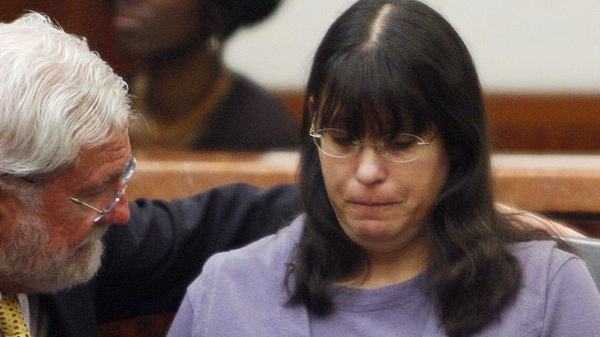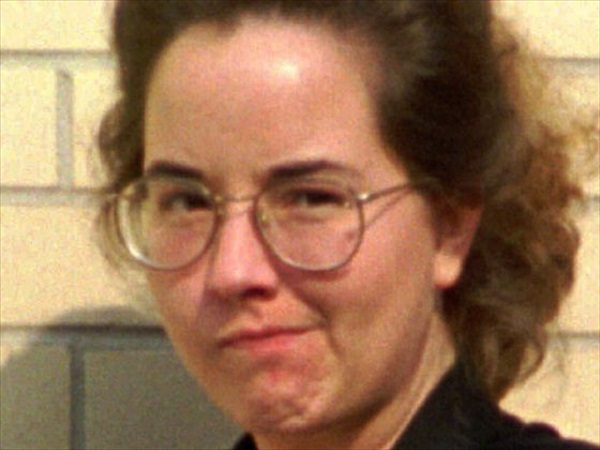 Our World
Our World  Our World
Our World  Weird Stuff
Weird Stuff 10 Fascinating Facts You Might Not Know About Snow
 Miscellaneous
Miscellaneous Top 10 Things Crypto Was Supposed to Change & What Actually Did
 History
History 10 Huge Historical Events That Happened on Christmas Eve
 Music
Music 10 Surprising Origin Stories of Your Favorite Holiday Songs
 History
History 10 Less Than Jolly Events That Occurred on December 25
 Weird Stuff
Weird Stuff 10 Funny Ways That Researchers Overthink Christmas
 Politics
Politics 10 Political Scandals That Sent Crowds Into the Streets
 Weird Stuff
Weird Stuff Ten Bizarre Facts About The Doge Meme
 Our World
Our World 10 Ways Your Christmas Tree Is More Lit Than You Think
 Our World
Our World 10 Archaeological Discoveries of 2025 That Refined History
 Weird Stuff
Weird Stuff 10 Fascinating Facts You Might Not Know About Snow
 Miscellaneous
Miscellaneous Top 10 Things Crypto Was Supposed to Change & What Actually Did
Who's Behind Listverse?

Jamie Frater
Head Editor
Jamie founded Listverse due to an insatiable desire to share fascinating, obscure, and bizarre facts. He has been a guest speaker on numerous national radio and television stations and is a five time published author.
More About Us History
History 10 Huge Historical Events That Happened on Christmas Eve
 Music
Music 10 Surprising Origin Stories of Your Favorite Holiday Songs
 History
History 10 Less Than Jolly Events That Occurred on December 25
 Weird Stuff
Weird Stuff 10 Funny Ways That Researchers Overthink Christmas
 Politics
Politics 10 Political Scandals That Sent Crowds Into the Streets
 Weird Stuff
Weird Stuff Ten Bizarre Facts About The Doge Meme
 Our World
Our World 10 Ways Your Christmas Tree Is More Lit Than You Think
10 Shocking Cases of Parents Murdering Their Families
If you were to list the most shocking criminal act a person could commit, murdering one’s own children would be ranked right up there at the top. It’s especially shocking when the perpetrator has no prior criminal record, and is living a seemingly normal life before they suddenly decide to inflict violence upon their family.
Here are ten parents who crossed that line, and committed an act of filicide. In many of these cases, the perpetrator is clearly guilty. Others are still mixed up in controversy about what really happened. But worst of all, some of these perpetrators have never been caught for their crimes, and may still be out there somewhere.

One of the most notorious acts of familicide was committed by John List, a seemingly ordinary accountant from Westfield, New Jersey. On November 9, 1971, List shot his wife and mother at the family’s home, and then shot two of his children, Patricia and Frederick, after they returned from school. Chillingly, List then went to watch his son, John Jr., playing in a soccer game at school, before driving him home and shooting him too. List planned these murders so meticulously that it was over a month before the bodies were discovered. By that time, he was long gone.
List was unemployed and experiencing financial difficulties at the time of the murders, and his family didn’t even know he had lost his job. In his own twisted mind, List believed it was better to send his family to heaven rather than give them a share in his hardships, so he killed them and disappeared to start a new life.
List remained one of the world’s most notorious fugitives until he was profiled on America’s Most Wanted in 1989. The show featured a remarkably accurate age-progressed clay bust of List, and viewer tips led authorities to discover that he was living in Richmond, Virginia, under the name “Robert Clark.” He was arrested and sentenced to five consecutive life terms for the murders, and died in prison in 2008.

On March 2, 1976, a brush fire was discovered in a wooded area in Columbia, North Carolina, which concealed a shallow grave containing the burned remains of five bodies. They remained unidentified until eight days later, when police visited the residence of William Bradford Bishop in Bethesda, Maryland, and discovered a bloody crime scene. The bodies were soon identified as Bishop’s wife, mother, and three sons. On March 18, Bishop’s car was found abandoned at Great Smoky Mountains National Park in Tennessee, but Bishop himself was nowhere to be found.
Bishop was an employee of the State Department, and decided to leave work early on March 1 after discovering that he had been passed over for a promotion. It is theorized that this event might have caused him to snap, as Bishop would purchase a ball-peen hammer, a shovel, and a gas can before returning home that night to bludgeon his family to death. He drove 275 miles to dispose of their bodies before driving to Tennessee to abandon his vehicle. Because of his experience in the Foreign Service, it was believed that Bishop fled to Europe.
Nearly three years after the murders, a former co-worker spotted a transient resembling Bishop in a washroom in Sorrento, Italy. This man proceeded to panic and run away. There have been numerous sightings of him in Europe over the years, but William Bradford Bishop still remains a wanted fugitive.

In 1999, Andrea Yates was living in Houston, Texas, with her husband and four children, when she suffered a complete nervous breakdown. Over the course of the summer, she would make numerous suicide attempts which led to psychiatric hospitalizations. Yates was eventually diagnosed as having postpartum psychosis—but even though she was advised not to have any more children, she gave birth to a fifth child in November 2000. On June 20, 2001, Andrea Yates snapped, and drowned all five of her children in a bathtub.
Yates was indicted for capital murder, and pleaded not guilty by reason of insanity. In March 2002, a jury rejected this defense and sentenced her to life imprisonment. In 2005, this conviction was reversed on the grounds that one of the prosecution’s witnesses had testified that Yates got the idea to drown her children and plead insanity from an episode of Law & Order, but it was discovered that no such episode existed. One year later, Yates was found not guilty by reason of insanity, and committed to a mental hospital. She remains incarcerated, but to this day it is heavily debated whether she was truly insane—unfairly pushed to breaking point by her husband’s insistence on having a fifth child—or whether she was an evil woman who knew exactly what she was doing.
In the early morning hours of February 17, 1970, military police arrived at the Fort Bragg, North Carolina, residence of Green Beret physician, Dr. Jeffrey MacDonald. MacDonald had a stab wound and numerous cuts and bruises, but his wife, Collette, and two young daughters, Kimberley and Kristen, were found brutally stabbed to death. MacDonald’s story was that a group of drug-crazed Charles Manson-esque hippies had broken into his home and committed the murders. There were suspicions about MacDonald’s account of the crime, but an Army Article 32 hearing cleared him of any wrongdoing, and he would later move to California.
MacDonald’s father-in-law, Freddie Kassab, eventually became convinced that MacDonald had staged the crime scene—and he launched his own investigation. Evidence was uncovered which eventually led to MacDonald being charged with the murders, and sentenced to life imprisonment. This remains one of the most controversial murder cases of all time, as MacDonald’s guilt is still hotly debated to this day.
There have been allegations of prosecutorial misconduct, poor crime scene investigation, and confessions from a currently deceased suspect named Helena Stoeckley that she and her friends were the ones who committed the murders. But the physical evidence from the scene still seems to point to MacDonald’s guilt, so in spite of numerous appeals to the court, he remains incarcerated.

In the early morning hours of June 6, 1996, a Rowlett, Texas, woman named Darlie Routier frantically called 911. She claimed that while she was sleeping downstairs with her two sons, Damon and Devon, she awoke to find an unknown male intruder attacking her. After chasing the intruder out of the house, Darlie then discovered that she had been stabbed and that Damon and Devon had been brutally murdered. Her husband and youngest son were sleeping upstairs, and missed the attack. But the authorities did not believe Routier’s story, and they charged her with the murders four days later.
It is believed that after murdering her sons, Routier inflicted her own stab wounds upon herself and staged the crime scene. It seemed unlikely that she could have remained asleep while this so-called intruder was killing her children—and since there was no blood trail leading away from the scene, the physical evidence did not match Roulier’s story.
It was theorized that since the family was experiencing financial difficulties, Darlie killed her sons to collect on a life insurance policy. When she went to trial, she was sentenced to death via lethal injection. Like the Jeffrey MacDonald case, this remains highly controversial; supporters of Routier’s innocence have pointed to numerous errors in the investigation, and think that certain pieces of evidence support her story. But Routier still remains on death row, seventeen years later.

On December 7, 2009, Susan Powell—a twenty-eight-year-old woman from West Valley, Utah—mysteriously disappeared. Because she had been having trouble with her marriage, Susan’s husband, Josh Powell, soon became a suspect. Josh claimed that he returned home to find his wife missing after taking their young sons, Braden and Charlie, on a camping trip. This story did not make much sense, however, since temperatures were below freezing at that time. As suspicion began to mount against Josh, he eventually lost custody of his children to Susan’s parents, and was only allowed supervised visitation.
On February 5, 2012, a social worker was taking Braden and Charlie to Josh’s home for a visit when Josh pulled his children inside and locked her out. He then proceeded to attack his sons with a hatchet before blowing up his house in a premeditated murder-suicide. It is speculated that authorities were close to finding incriminating evidence to tie Josh to Susan’s disappearance, which is why he decided to murder his children and take his own life. Sadly, Josh did not leave behind any information about what happened to his wife. Susan’s body has still not been found, and she officially remains a missing person.

On the night of May 19, 1983, a woman named Diane Downs pulled into a hospital in Springfield, Oregon. Her three children, Danny, Cheryl, and Christie, were in the back of the car and had all been shot—and she herself had a gunshot wound in her left forearm. Downs claimed that an unknown assailant had attempted to carjack her on a rural road, and had shot at her and her children. Cheryl was immediately pronounced dead, but the other two children survived the attack. Danny was paralyzed while Christie suffered a disabling stroke. Investigators were immediately suspicious about Diane’s story, since she acted surprisingly calm about the situation, and Christie appeared terrified whenever her mother was in her presence.
The evidence in the car did not match Diane’s story—and as soon as Christie recovered well enough to speak again, she was able to testify that her own mother had carried out the shooting. Investigators discovered that Downs had been conducting an affair with a married man named Robert Knickerbocker. Since he did not want children in his life, it is believed that Downs decided to kill her kids so she could continue the affair. Downs was found guilty of the crime, and sentenced to life imprisonment plus fifty years. Her surviving children were eventually adopted by Fred Hugi, the prosecutor on her case.

For more than ten years, Robert Fisher has occupied a spot on the FBI Ten Most Wanted Fugitives list. Fisher was living in Scottsdale, Arizona, with his wife, Mary, and his two children, Brittney and Bobby Jr., when authorities responded to a powerful explosion at their home on April 10, 2001. They found the remains of Mary, Brittney, and Bobby Jr., but Robert and the family’s SUV were nowhere to be found. It was soon discovered that Mary had been shot, and that all three of the victims had their throats slit prior to the explosion.
Investigators would uncover that Robert Fisher was a controlling husband and father, and therefore in danger of being divorced by his wife. It is thought that because Fisher was so emotionally affected by the divorce of his own parents, he did not want his children to experience the same thing. It’s likely that after murdering his family, Fisher doused them with gasoline before cutting the house’s natural gas line to ignite an explosion and cover up all traces of homicide. Ten days after the murders, the Fishers’ SUV was found at Tonto National Forest. People have wondered whether Fisher may have committed suicide somewhere, or whether he is living under an assumed identity—but until any trace of him is found, he remains a wanted fugitive.

On October 25, 1994, a Union, South Carolina, woman named Susan Smith frantically contacted the police to report that she had been carjacked by an unidentified black male. She claimed that this man drove her vehicle away with her two sons, three-year-old Michael and fourteen-month-old Alex, still inside. Police conducted a massive search for the vehicle, and this set off a media frenzy as Smith went on television to plead for the return of her children.
But the authorities soon began to feel that there were inconsistencies in Smith’s story, and they became particularly suspicious after a polygraph test showed signs of deception. Nine days later, after some intense interrogation, Smith finally confessed that her story was false and that this carjacker did not exist.
Smith’s vehicle was soon found in John D. Long Lake with her deceased children inside. She had deliberately rolled the car into the lake to drown them. Like Diane Downs, Smith had been conducting an affair with a man who had no interest in children, so she believed that getting rid of her own kids could rekindle their relationship. During her trial, Smith’s defense team claimed that her actions were the result of mental health issues—but the jury still sentenced her to life imprisonment for the murder of her sons. She will not be eligible for parole until 2024.

The most infamous case of familicide in Australia’s history took place in Port Campbell on July 2, 1970, when a crashed car was discovered on a rocky ledge near the bottom of a cliff at Loch Ard Gorge. In the driver’s seat was a deceased pregnant woman named Therese Crawford; the bodies of her three children—Kathryn, James, and Karen—were found under a tarpaulin in the back. Their father, Elmer Crawford, was nowhere to be found—so authorities instantly suspected that he had pushed the car over the cliff.
It was later determined that Crawford had constructed an electrocution device and attached alligator clips to his wife’s ears to electrocute her as she slept. He then proceeded to bludgeon his children to death. Two weeks before the murders, new wills had been drafted which would leave Crawford a fortune if his family died.
It’s thought that because the family’s car hit the rocky ledge and did not become submerged in the water, Crawford’s plan backfired, and he was forced to flee. In 2005, an elderly man was found dead in Texas with several phony IDs in his possession. His striking resemblance to Crawford led to speculation that it might be him, but DNA tests have since ruled this out—so Elmer Crawford’s whereabouts remain a mystery.
Robin Warder is a budding Canadian screenwriter who has used his encyclopedic movie knowledge to publish numerous articles at Cracked.com. He is also the co-owner of a pop culture called The Back Row.









